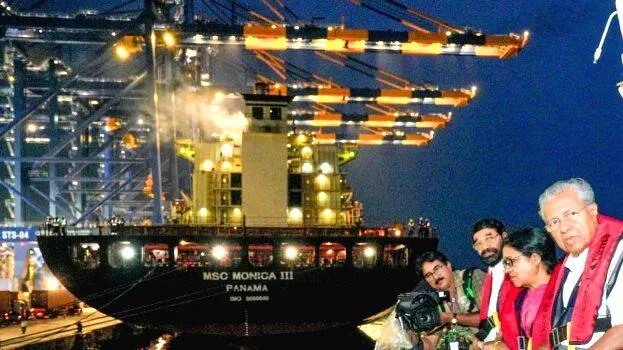

THIRUVANANTHAPURAM: With the formal dedication of the Vizhinjam Port to the nation by Prime Minister Narendra Modi tomorrow, Kerala is poised to make a major stride in infrastructure development. Vizhinjam will now mark India's presence on the global maritime map.
Situated just 18.5 kilometers from the key international shipping route that links Europe, Africa, and Asia, Vizhinjam boasts a natural depth of 20 meters, enabling it to host the world’s largest cargo vessels — demonstrated recently when the MSC Turkey, one of the largest container ships in the world, berthed at the port.
The Colombo port is 25 nautical miles away from the main shipping route. Mumbai is 700 nautical miles away, and Mundra is 1,150 nautical miles away. Ships choosing those farther ports instead of Vizhinjam would face over 50 extra hours of sailing. For instance, export shipments to America via Kochi take 60–65 days, and to Europe about 40 days, but through Vizhinjam, America can be reached in 35 days and Europe in just 22. With its proximity to the international shipping route — only one hour away — vessels often anchor offshore waiting for berthing opportunities.
Even before its formal inauguration, Vizhinjam has already emerged as a crucial port. Currently, an average of 3,000 containers are handled daily. After the first phase is commissioned, the port will have a capacity of 1 million containers annually. Once all development phases are completed by December 2028, the port is expected to handle 4.5 million containers per year.
The Adani Group has committed Rs 20,000 crore to the port’s development, of which Rs 9,600 crore is for upcoming phases. Vizhinjam will be developed into a maritime and logistics hub, with facilities like bunkering units (for ship refuelling) and a cruise terminal.
GST revenue for government
Each ship visit generates around Rs 1 crore in revenue for the port operator. Of the Integrated GST (IGST) collected during cargo handling, half goes to the state. Other services like loading, unloading, and ship maintenance are also taxed. The GST rate is 18%, shared equally by the Centre and the state. From the 11th year onward, the government will receive 1% of total revenue, increasing by 1% each year, up to a maximum of 25%, for 40 years. The port operation contract is valid for 65 years with Adani.
The long-term vision was theirs